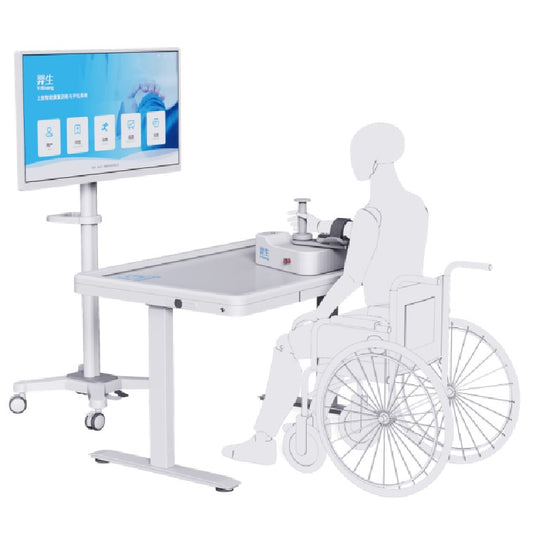Task Oriented Training for Stroke Patients
Task-oriented training (TOT) is a popular new technology for upper limb functional rehabilitation after stroke based on motor control and motor learning. Task-oriented training is a functional task based on the interaction between the individual, the task and the environment. Patients can actively try to solve problems encountered in functional tasks while adapting to changes in the environment, and help patients learn methods to solve target tasks.
What is Task-oriented training?
Why is Task-oriented training important for stroke patients?
How do stroke patients do task-oriented training?
Theoretical basis of task-oriented training
TOT is the most representative clinical retraining method based on motor control theory. It focuses on the training of functional tasks and the adaptability to environmental changes. The functions obtained through training must be able to be transformed into the real environment. It is a training method that designs specific tasks or activities based on individual abilities and training goals, and guides patients to complete these tasks or activities through active attempts to improve motor skills.
Repeated task-oriented training can affect the adaptability of the central nervous system and promote the reorganization of brain functions. Factors that promote functional reconstruction include repeated reinforcement, interest, challenge, social communication, and specific rather than abstract training projects or goals. The goals and tasks set by task-oriented training are concrete rather than abstract. For example, taking the upper limb to pick up an object is a specific task. Completing this action involves visual and tactile input, and the brain judges and integrates information. And the effective control of the system by the nerves, and then through the feedback of failure or success, the movement pattern is continuously adjusted to form an optimized neural network and movement program, which controls the specific sequence, speed, strength and other mechanical characteristics of the relevant muscles to complete this specific task. Promote the development of adaptability, feedforward and coordination abilities. However, if the upper limbs only do flexion and extension or simple extension without specific goals, the information input and integration mentioned above will be lost, and the movement mechanics characteristics will be completely different, turning it into an empty joint activity. Task-oriented training also emphasizes active participation in controlled application and individualized treatment, mainly focusing on functional training in daily life and repeated reinforcement.
3. Clinical Application of Task-Oriented Training
Mirror neuron system, task-oriented training applies the learned mirror movements to real-life activities, such as practicing pronation and supination of the forearm, flexion and extension of the wrist joint, and grasping and relaxing of the hand in a mirror environment. Practice grabbing a cylindrical bottle or moving a cup to the perioral area in a real environment. In addition, for patients with upper limb and hand dysfunction after stroke, transcranial direct current stimulation combined with task-oriented training can be used to help patients complete common daily activities such as reaching for objects, grabbing and placing water cups, and completing drinking water.

Activities, the results show that a combined program of task-oriented training can reduce muscle tone and promote motor function recovery in stroke patients. Through resting-state magnetic resonance studies, it was found that the above combined program including task-oriented training had a significant impact on resting-state spontaneous brain activity. The underlying neural mechanism for promoting the recovery of motor function in stroke patients may be related to the ALFF in the anterior cerebellar lobe. Enhance relevance. The TOT program combined with motor imagery refers to task-oriented training that is performed immediately after the patient completes the motor imagination. The motor movements in the imagined environment are applied to actual activities, such as eating movement exercises of the upper limbs. Research results prove that this program can reduce the risk of stroke. The functional connection between the MI area and the SMA area on both sides of the patient was enhanced, which promoted the normalization of cerebral cortical remodeling in stroke patients. The DTI analysis results showed that the FA value of the affected hemisphere in stroke patients increased, which also suggested that this program promoted the myelination of myelinated fibers. The reshaping of elements. In terms of lower limb function, transcutaneous acupoint electrical stimulation combined with task-oriented training can significantly improve the lower limb motor function and walking ability of patients with hemiplegia after subacute stroke and enhance their ankle joint control.
In summary, task-oriented training can improve the functional impairment of stroke patients, strengthen their daily activities, and improve their quality of life. It is worthy of further research and promotion.


